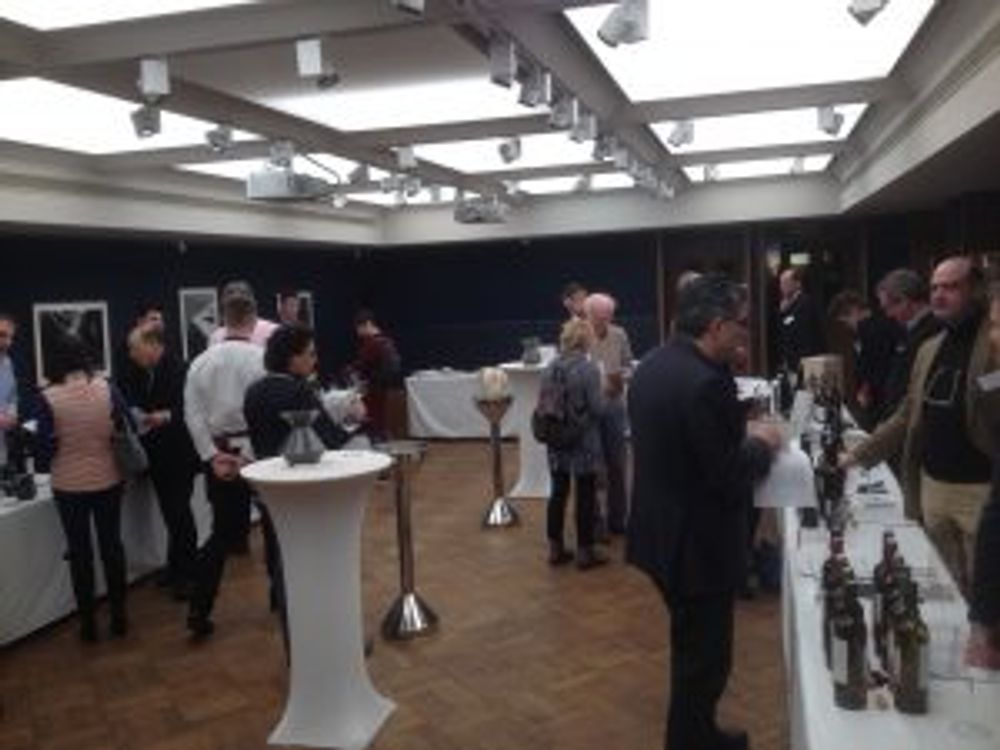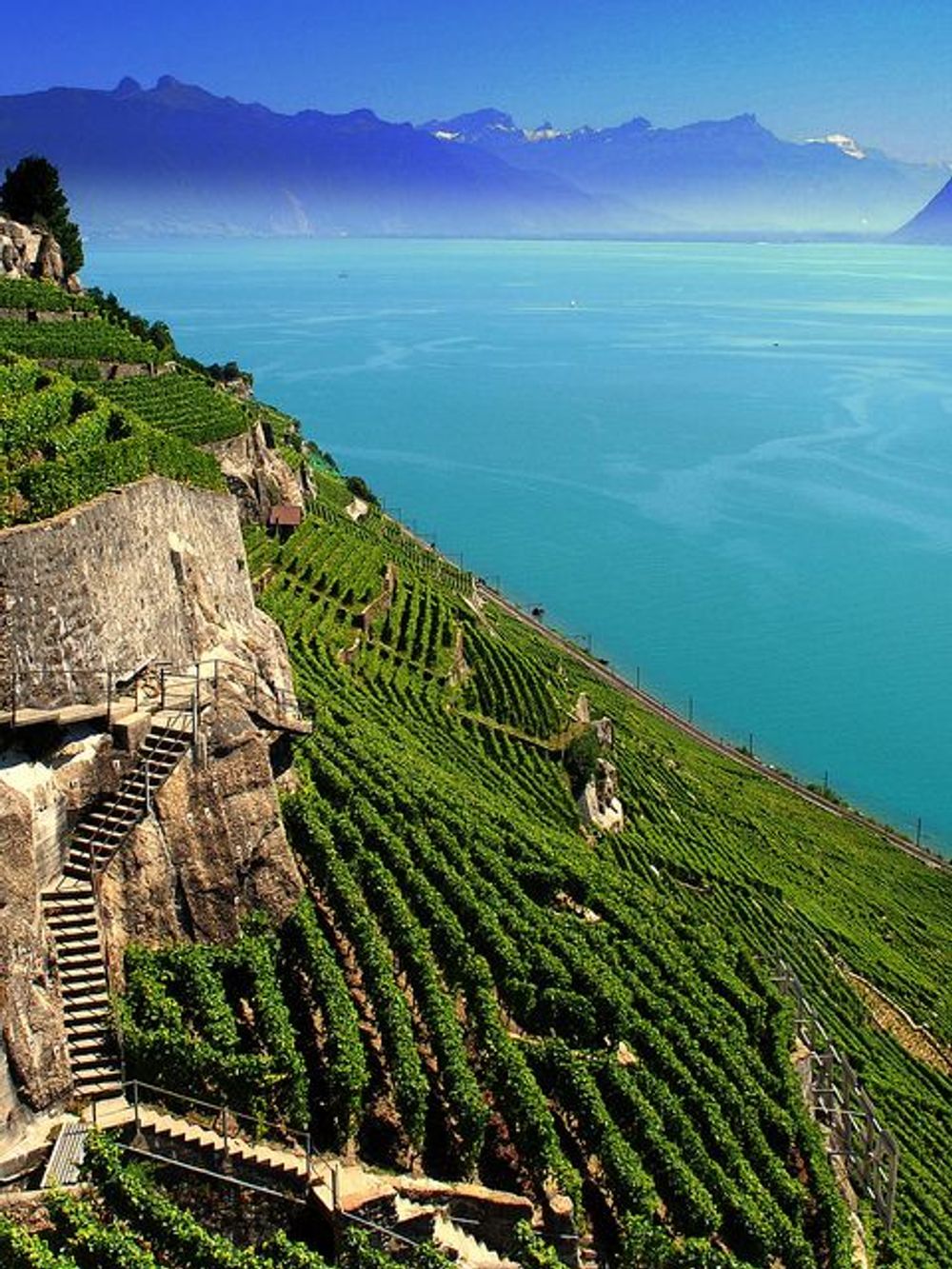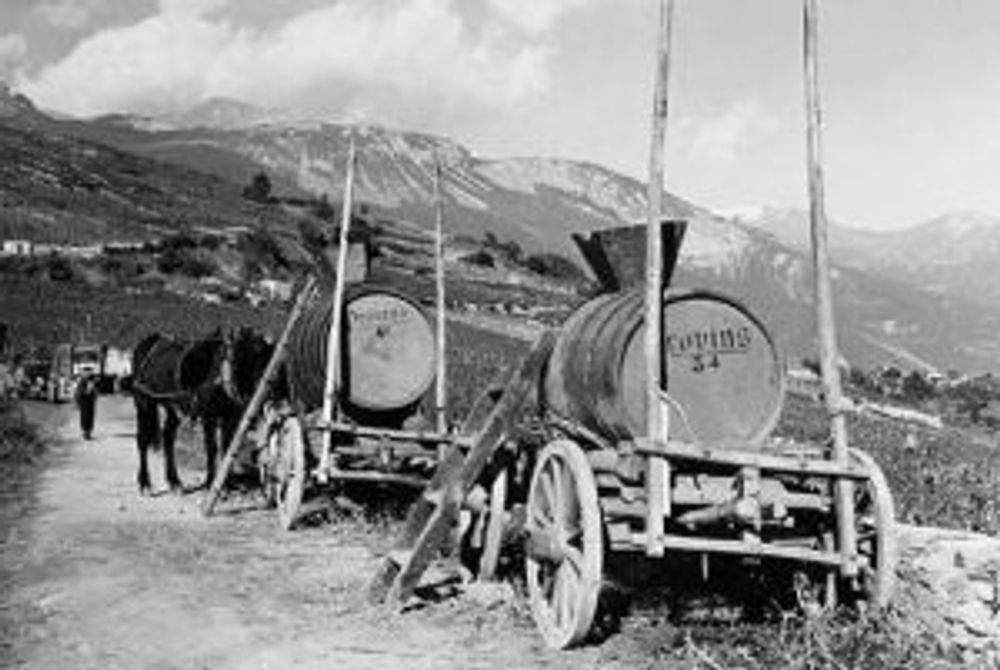There was plenty of Chasselas on show but international varieties too and a whole host of new varieties made via crossings over the past 30 years, including Gamaret, Garanot, Diolinor and Carminor.
For a country so much better known for its banks, watches, cheese and chocolate, Swiss wine has been making quite a stir. A fistful of international prizes has helped – most notably for Tourbillon, an unforgettable sweet wine made by Provins with botrytised Petit Arvigne and Marsanne grapes – as has the growing appreciation of ‘altitude’ wines by critics and consumers alike.

Swiss wine tasting, 67 Pall Mall, London, February 2018
With this in mind, I was surprised to arrive at the annual Swiss wine tasting at London’s 67 Pall Mall to find a much smaller tasting than at this time last year.
Eight wineries only. But then it’s not as if Switzerland actually needs the UK as a market. Less than 2% of the small volume produced – just under one million hectoliters compared to 48 million hectoliters in France – is exported. Why? Because the Swiss love their own wine.
And so few representatives from the trade. None of the mainstream agencies import Swiss wine. Perhaps it is the price? On my tasting list of around 50 wines, there wasn’t a single wine under £20 with most sitting comfortably in the £35-50 range, and some of the pricier Merlots and Syrahs between £60-80.
Michele Caimotto of Wine Rose, a Swiss-based wine consultancy company, admits Swiss wine is expensive but points out that with basic salaries starting at CHF 4350 a month (£3,306), this is hardly a problem for locals. The problem is that the high cost base makes them pricey – and that’s before taking Britain’s Brexit-battered pound into account.
“Entry level wines here are far too expensive for what they are,” Caimotto says.
But look a little higher up the price/quality scale and the impact of the country’s natural advantages start to become apparent. Switzerland has altitude, of course; but its six wine regions also offer diverse, often dramatic terroir and increasingly ambitious winemakers using production techniques that range from amphorae to concrete tanks, who are keen to make the most of the considerable natural advantages bestowed on their beautiful country.

Amongst these are grapes. Switzerland is indigenous variety heaven, home to some 240 varieties although only around 40 are used in any meaningful quantity. Native varieties you will almost certainly never have heard of are lovingly nurtured and produce unique wines; indeed, sometimes a variety can be indigenous to a tiny sub-region and cannot be found beyond it.
The star white grape is Chasselas, made into Fendant wine in the Valais, but known in other areas as Gudetel. An eating grape, it has something of a local cult following amongst local consumers and winemakers, but is rather looked down upon elsewhere in the wine producing world. It currently accounts for 25-27% of production. Caimotto admits Chasselas is often deemed a bit bland due to the virtual absence of acidity, but that is how the Swiss generally like their wine.
“Chasselas is fresh and delicate and reveals both the terroir and winemaker’s skill,” he says, adding it also has the capacity to age beautifully.
Other widely grown varieties include Pinot Noir, the most grown variety at around 29% of the total, Gamay and Merlot, and Switzerland’s dazzling array of indigenous varieties which include Amigne, Humagne Blanche, Rauschling, Cornalin and Humagne Rouge.

New varieties – made generally via crossings over the past 30 years – include Gamaret, Garanot, Diolinor and Carminor, a cross between Pinot Noir and Cabernet Sauvignon.
The biggest surprise of this tasting though, was how good Switzerland is becoming at working with grapes normally associated with warmer regions.
Caimotto presented a masterclass of Swiss Syrah – a niche market within a niche market if there ever was one. Less than 250 hectares of Syrah are planted in Switzerland, almost all in the Valais region (which is at the start of the Rhône). Yet in a blind tasting comparing 2015 Swiss Syrah to 2015 Rhone Syrah – specifically, from Côte-Rôte (2014), Hermitage and Cornas – none of the professional tasters present identified the French Syrah, instead misidentifying Swiss Syrah as French and duped by the former’s depth of colour, flavour and complexity.
The clear winners here were Cayas, an award winning Syrah now in its 20th vintage and produced by Germanier, the Syrah 2015 by A Deletraz, and Syrah S from Cave de Rois; the last of these, made just twice since 2011 (in 2011 and 2015) was quite remarkable, showing great complexity and concentration. From a region seldom, if ever associated with Syrah, the results were remarkable.
“This was a fair challenge, pitting some of our best against some of their best,” said Caimotto.
So, aside from the above, what were my choice wines?
Provins is Switzerland’s biggest producer, making some ten million bottles in a typical year, and their Maitre de Chais range are decent wines that show great typicity of the Swiss varieties, and some international varieties too. I found both the Petite Arvine 2016 and the Vielles Vignes 2016 (a Marsanne-Rousanne blend) had great suppleness and fruit, as did their red companions, the Humagne Rouge 2015 and the Cornalin, the latter with great dark berry fruit concentration on the palate.

Vaud-based Massy Wines was showing three very different wines made from Chasselas, the first a simple unoaked wine, the other two from different terroir; Eposes, Clos du Boux and Dezaley, Chemin de Fer, with the last in particular a full, quite generous wine that Gregory Massy (part of the fourth generation that makes wine here) says “demonstrates how Chasselas takes its character from the soil”.

Basel-based Vinigma was one of the more eclectic wine producers at the tasting, with proprietor Valentin Jakob Schiess making white wines in French-speaking Valais and reds in German-speaking Graubunden, to the east.
The A Priori 2016 (an intriguing and surprisingly full blend of Humagne Blanc and Petite Arvine) is a wonderfully fresh wine made with no maceration and matured in stainless steel without undergoing malo; a great blend of the two varieties.
Nanumy 2016 is one of the better Sauvignon Blancs I have tasted recently, very mineral, fresh and fruity. But Jeninser 2015 (made from the local Gamaret grape and Pinot Noir) and its baby brother Aspermont 2016 (Pinot Noir) were for me, the stars of the tasting. Both made in the ripasso style, drying in the fresh mountain air before going into old and new Swiss oak barrels. The Jeninser in particular had fantastic complexity, coupled with a length that followed me out of 67 Pall Mall and into the cold, snowy streets of Piccadilly.
Swiss wines are not what you might expect, not at all. It’s just a shame that more people in the UK trade don’t seem to have discovered that.
































